The Palm Island project takes its inspiration from the unique geography of Chongqing where the Yangtze River and Jialing River converge into one.
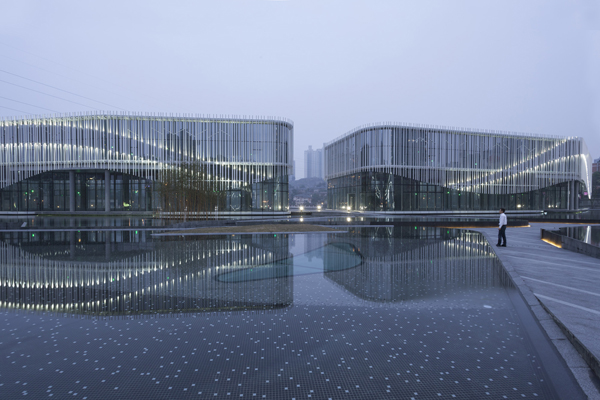
April 3rd, 2013
The Palm Island project is a series of five ‘floating islands’ situated in northern Chongqing, China on the banks of Palm Lake and Taiping Reservoir.
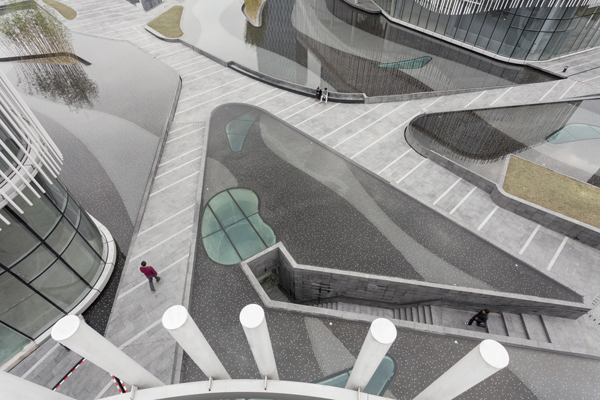
The design team from HASSELL, led by John Pauline, Design Principal of HASSELL Hong Kong, drew inspiration from the geography of Chongqing, which sits at the convergence of the mighty Yangtze River and Jialing River.
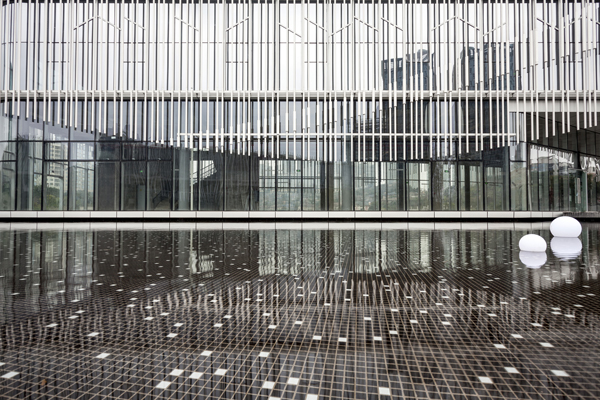
Housing five restaurants and a teahouse, the site “conceptually and visually connects the reservoir and the lake”, says Pauline.
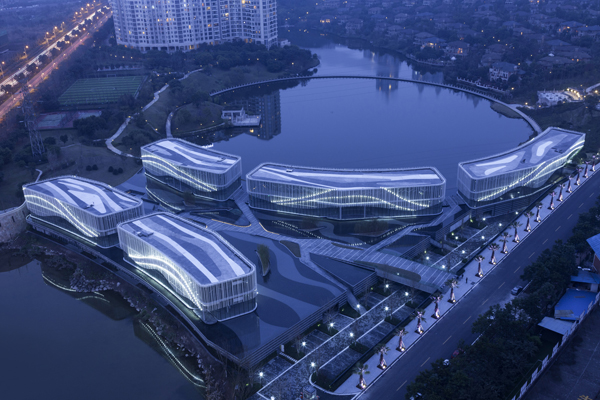
Patrons at each restaurant enjoy views of natural water vistas on one side and a private ‘water courtyard’ on the other, integrated visually through the creation of an infinity pool-style water platform – this gives the architectural impression that the buildings are floating on water when viewed from afar.
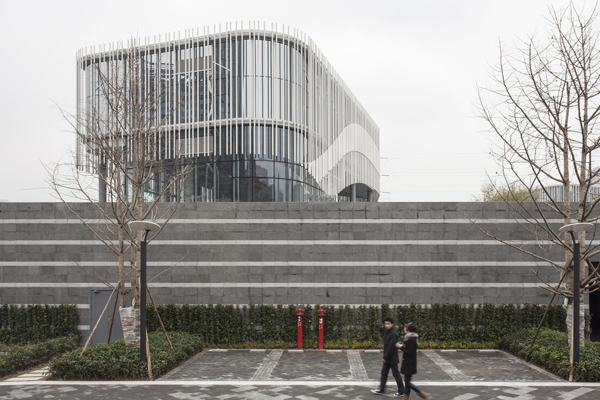
Pauline says it was a challenge to give each restaurant equally good views, but not only does the water platform achieve this, the kitchen and restrooms are also concealed under it.
Water is the most important material in this project, says Pauline, as it “conceptually connects the existing water bodies, and also becomes an effective ‘elevation’ by reflecting the buildings”.
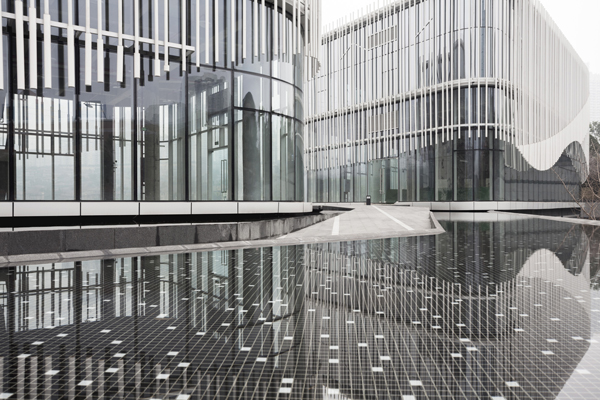
Pauline explains how the glass structure and external aluminium screens interact with the lake to give off a ‘musical quality’.
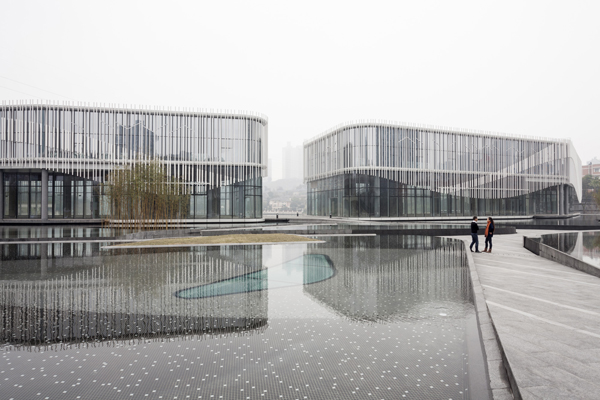
“The architecture is frozen in time, but there are several aspects that create sequential experiences. The curved forms of the building and glass give continuously changing perspectives and reflections, with the white aluminium screen also changing visual density depending on the viewer’s perspective.
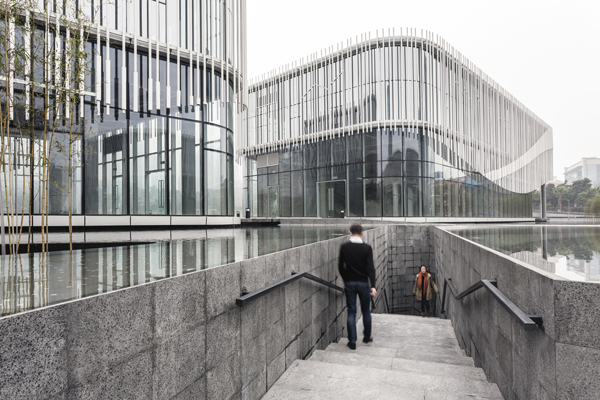
“The rigid, but fluid patterns of white rods will always be viewed through reflections from the water. The movement of the water will continuously ‘vibrate’ the straight lines. The reflections of the sunlit white rods are highlighted against the dark tiles under the water, and during the evening the effect will be further enhanced with the lighting on the rods.
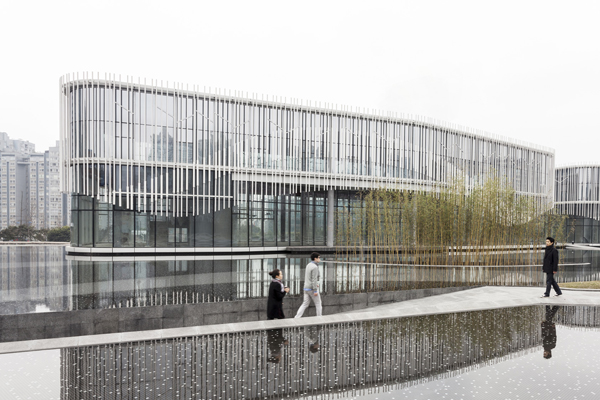
“Finally, the strong wave patterns that are formed in the elevation are a result of the combination of using thicker and thinner vertical rods. The elements are all straight, and not physically connected into a wave pattern, and so it is the viewer’s perception that ‘plays’ to experience the rhythm and musicality of the space.”
HASSELL
hassellstudio.com
INDESIGN is on instagram
Follow @indesignlive
A searchable and comprehensive guide for specifying leading products and their suppliers
Keep up to date with the latest and greatest from our industry BFF's!

Gaggenau’s understated appliance fuses a carefully calibrated aesthetic of deliberate subtraction with an intuitive dynamism of culinary fluidity, unveiling a delightfully unrestricted spectrum of high-performing creativity.

How can design empower the individual in a workplace transforming from a place to an activity? Here, Design Director Joel Sampson reveals how prioritising human needs – including agency, privacy, pause and connection – and leveraging responsive spatial solutions like the Herman Miller Bay Work Pod is key to crafting engaging and radically inclusive hybrid environments.

BLANCOCULINA-S II Sensor promotes water efficiency and reduces waste, representing a leap forward in faucet technology.
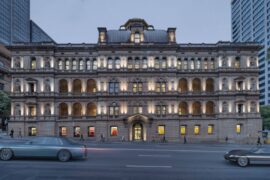
The Lands by Capella has had its official naming ceremony, marking the next chapter in the transformation of one of Sydney’s most revered heritage buildings.

The Australian Institute of Landscape Architects (AILA) Queensland Awards have been announced at a gala event held at inner-city Brisbane’s Blackbird on Thursday 12th June.
The internet never sleeps! Here's the stuff you might have missed

While the alluring myth of a lone genius can be particularly appealing, Knoll’s enduring legacy was built on a more profound reality: that a singular vision is only augmented through dialogue, proving that collaboration is one of the most transformative tools in design.

In Newcastle’s CBD, Coverite Projects transformed a blank floorplate into a workplace with soul, using Milliken flooring to balance industrial grit with residential warmth and intuitive wayfinding.